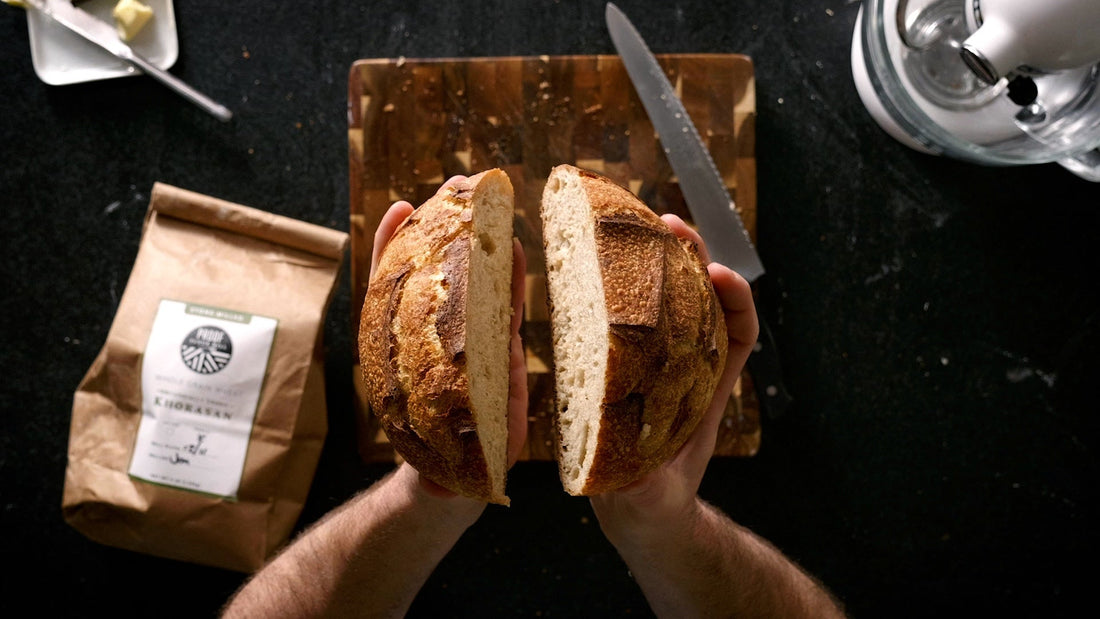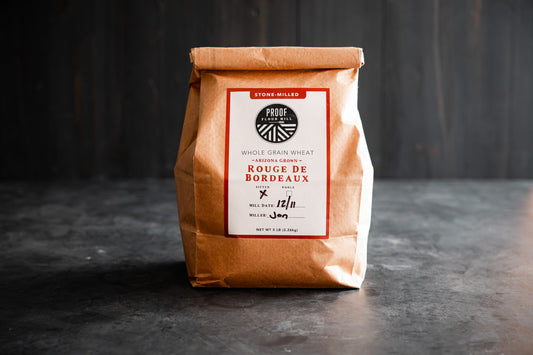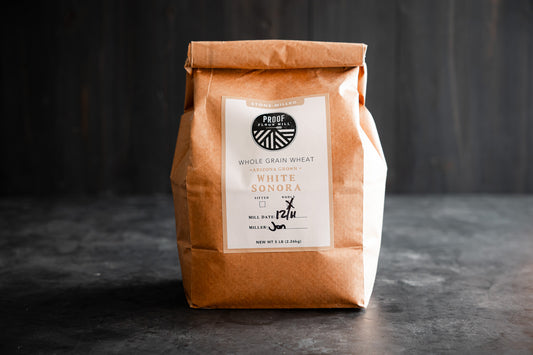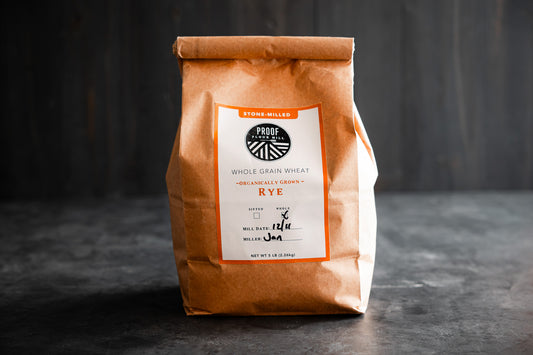
Khorasan Sourdough Bread
Share
This advanced yet approachable Khorasan bread recipe highlights the deep, nutty flavors of this ancient grain, yielding a soft, long-lasting loaf. The key is incorporating a scalded porridge made from Khorasan flour, which enhances moisture retention and tenderness.
Ingredients
Porridge (Scalded Khorasan Mixture)
270g boiling water
135g Khorasan flour (organically grown, stone-milled)
Main Dough
539g Type 85 Central Milling Flour (base flour)
136g sourdough starter (mature & active)
303g ice-cold water (to balance dough temperature)
13g salt
30g honey (for subtle sweetness)
Instructions
Step 1: Prepare the Porridge (Scalded Khorasan Mixture)
Bring 270g of water to a boil. Gradually whisk in 135g of Khorasan flour, stirring continuously to avoid lumps. Mix until a thick, cohesive porridge forms. Transfer the mixture to a bowl and allow it to cool naturally or speed up cooling by placing it in an ice bath. Once it reaches room temperature (~80°F/27°C), it's ready to incorporate into the dough.
Step 2: Mixing the Dough
Combine ingredients: In a large mixing bowl, add the cooled Khorasan porridge, 539g of Type 85 flour, and 303g of ice-cold water. Add sourdough starter: Mix in 136g of sourdough starter, ensuring it is evenly distributed. Incorporate the salt separately: Measure 13g of salt and set it aside for now. Begin mixing: Use a stand mixer with a paddle attachment on low speed until ingredients start to come together. Add honey: Once incorporated, slowly drizzle in 30g of honey. Develop the dough: Increase mixing speed to medium (speed 3–4 on a KitchenAid). Mix for 7–10 minutes, or until the dough becomes smooth and elastic. The dough should start pulling away from the sides of the bowl. Check consistency: If the dough is still sticky and loose, continue mixing until it forms a more cohesive mass.
Step 3: Bulk Fermentation & Stretch and Folds
First rise (3 hours): Transfer the dough to a warm place (~75–80°F/24–27°C). First stretch & fold: With wet hands, gently stretch the dough from one side and fold it over itself. Repeat on all four sides. Let rest for 30 minutes. Second stretch & fold: Repeat the stretch-and-fold process, working on a clean surface if needed. Let rest for 30 more minutes. Final stretch & fold: Perform the last fold and allow the dough to rise for another 30 minutes (total bulk fermentation time ~5 hours).
Step 4: Shaping the Loaves
Divide the dough: Turn the dough onto a floured surface and portion into two loaves (~680g each). Shape: Flip each portion over, gently stretch, and fold the edges into the center to create surface tension. Prepare the proofing baskets: Lightly flour a banneton (or use a bowl lined with a floured tea towel). Optionally, dust the loaf with rice flour to prevent sticking. Final proof (cold fermentation): Cover and refrigerate overnight for 12+ hours to develop flavor and structure.
Step 5: Baking
Preheat oven & Dutch oven: Set the oven to 415°F (213°C) and place a Dutch oven inside to preheat for 1 hour. Prepare the loaves for baking: Turn out a loaf onto parchment paper. Score the top with a simple square or cross pattern using a bread lame or sharp knife. Bake covered: Place the loaf into the Dutch oven, cover, and bake for 20 minutes to trap steam. Uncover & finish baking: Remove the lid and continue baking for 10–12 minutes until the crust is deeply golden brown. Cool completely: Transfer to a wire rack and let the loaf rest for at least 1 hour before slicing.
Step 6: Enjoy!
This Khorasan bread has a soft, silky crumb with a rich, nutty flavor, mild sweetness from the honey, and excellent shelf life. Perfect for sandwiches, toast, or just with butter.





8 comments
Than k you very much!
I appreciate your providing home baker scaled recipes. For years I would watch your YouTube videos and try to scale down what you were doing. Some odd things in the recipe. In Step 2 you say to measure and hold back the salt to be used later. The recipe does not tell us to then add it. I added it when I normally would, but the recipe is silent. For step 3, it starts off suggesting a 3 hour first rise and then ends by suggsting a 5 hour total bulk. I am unsure as to where the extra two hours fits in. I am in the middle of baking this for the first time, I look forward to the finished loaves.
I scalded my Khorasan and used a whisk that was too dense. Lesson learned. It was hard to get all flour out. Was i supposed to leave the water boiling while adding the flour? I didn’t. When does the salt get added?
I recently have started baking bread as a hobby, which has brought me to upgrade my kitchen appliances such as my oven, and invest in a better stand mixer!
So after about 4 months of starting at the most basic beginner level, can bake several loaves a day (5 is my record) now including bulk fermentations and refrigerated proofing.
With this recipe the long fermentation and refrigerated proofing are your friend, and also my first shot at using the scald process. Worked out great!
Thank you Jon and Amanda for sharing your lives and recipes! And greetings from Marysville Washington State, north of Seattle.
Looking forward to trying this recipe. I noticed the instructions say to set the salt aside after measuring, but it doesn’t say when to add it back in.
Thanks!